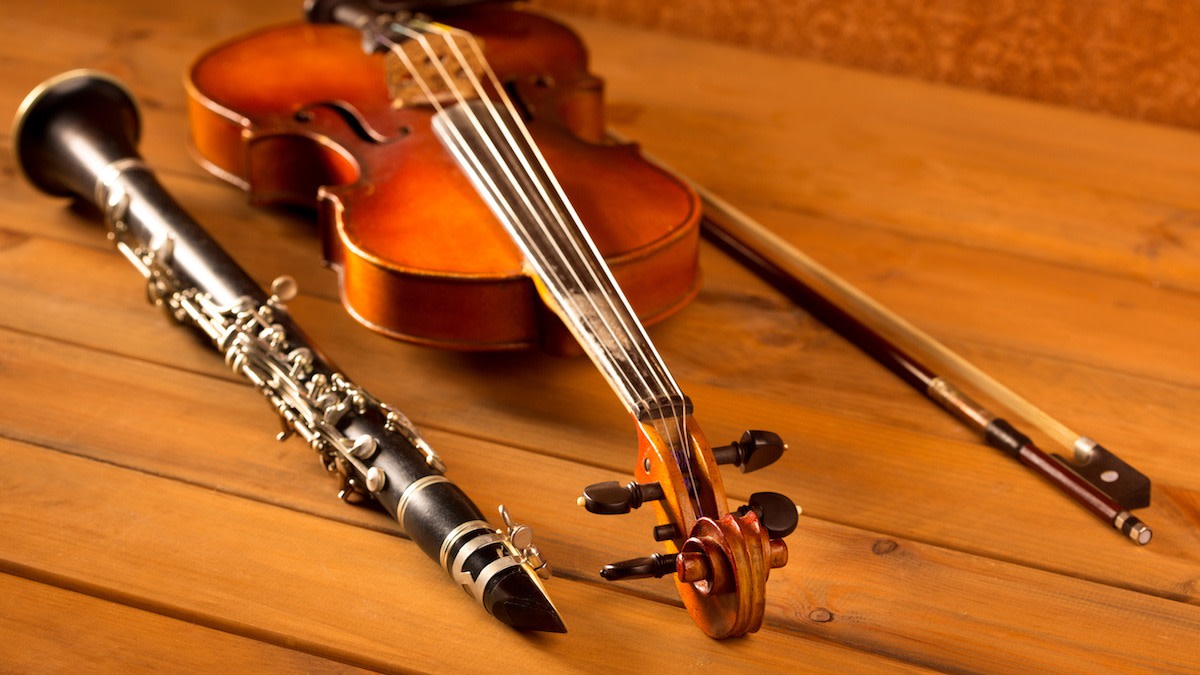Learn About Klezmer Music: History, Style, and Musical Characteristics
Written by MasterClass
Last updated: Sep 29, 2021 • 3 min read
Have you ever danced the hora? If you’ve attended a reception for a bar mitzvah or bat mitzvah, you probably have. Or perhaps you danced the hora at a Jewish wedding (or even a non-Jewish wedding). This popular dance is perhaps the best-known example of klezmer music, a style of instrumental music that dates back centuries and took hold in America in the twentieth century.
Learn From the Best
What Is Klezmer Music?
Klezmer is a style of folk music that draws upon the traditions of Ashkenazi Judaism and Eastern European folk traditions. The term “klezmer” combines the Hebrew words for a vessel (“kley”) and melody (“zemer”).
- Ensembles of klezmer musicians are called kapelye, and a collection of klezmer players is called klezmerim.
- The klezmer genre places heavy emphasis on music for celebrations, such as weddings and B’nei Mitzvah.
Many Americans may know klezmer either from dancing the hora or via the score to the Broadway musical Fiddler on the Roof, which laced traditional show tunes with the scales and melodies that have permeated klezmer for many generations.
What Are the Origins of Klezmer Music?
The musical traditions of klezmer trace back many centuries, but in the United States, most klezmer music was imported by Jewish immigrants from Eastern Europe over the course of the twentieth century. Many of these immigrants spoke Yiddish as their primary language, and to that end, many klezmer classics contain Yiddish lyrics.
The primary cultural influence upon klezmer music is Ashkenazi Judaism, but it also incorporates the folk music traditions of nations such as:
- Russia
- Poland
- Romania
- Germany
Klezmer also shows heavy influence from the Roma, or gypsy, culture. Roma music has intermingled with many European styles. It stands to reason that such music should have influenced klezmerim, as many Roma lived side-by-side with Jews in Europe.
Some twentieth-century American klezmer musicians also adopted certain customs from jazz music, thus making American klezmer slightly distinct from the European klezmer that came before it.
What Are The Musical Characteristics of Klezmer Music?
The vast majority of klezmer music is designed for dancing. A klezmer band may know a wide variety of dance styles including:
- Hora
- Freylekhs
- Khosidl
- Sher
- Kolomeike
- Nigun
- Terkish
- Sirba
- Waltzes, particularly padespan
- Mazurka and polka
- Humoresque "Halaka"
- Tango
Non-dance forms of klezmer include:
- Fantazi
- Taksim
- Doina
Klezmer music is often composed using folk scales common to the Roma. These include harmonic minor, harmonic major, and Phrygian dominant scales. These scales are combined with folk music traditions of Eastern Europe (particularly Russia) and modal instrumentalism of Greek and Middle Eastern music to create a widely varied musical palette.
What Instruments Are Typically Used in Klezmer Music?
When most people think of klezmer music, two instruments spring to mind above all others: the violin and the clarinet. Indeed these two instruments are elemental to many klezmer compositions.
However, klezmer instrumentation extends far beyond the violin and clarinet. Because klezmer naturally intertwines with so many other styles of music, it also shares common instruments with those styles. These include:
- Bass
- Cello
- Contra-violin
- Flute
- Guitar
- Piano
- Dulcimer
- Accordion
- Brass instruments such as cornets, trumpets, and tuba
Klezmer music typically contains long instrumental passages—or pieces that are exclusively instrumental—although vocalists also have a part to play. In the style of the Hebrew and Russian folk music that preceded it, klezmer often features emotive vocals with ample melisma. Vocal moods can range from ecstatic to mournful, depending on the style, melody, and lyrics.
What Is Modern Klezmer Music Like?
Much as prior generations of klezmer music borrowed liberally from folk and jazz, modern klezmer also incorporates musical trends of its era.
In 1975, a California band, The Klezmorim, billed itself as the first klezmer revival band; their influence led to a revival of klezmer in the 1980s, which has lasted until today. Today’s klezmer music can feature electric guitars, drum kits, and even electronic beats. Groups like Mames Babegenush, which is based in Denmark, exemplify how klezmer music fuses with nearly any genre of western music. In California,
In this way, it simultaneously represents centuries-old Jewish and European traditions and also explores cutting edge trends in twenty-first-century music.
Want to Become a Better Musician?
Whether you’re a beginner violin player or have dreams of playing in a symphony orchestra, becoming a professional classical musician takes patience and perseverance. No one knows this better than Itzhak Perlman, the world’s reigning virtuoso violin player. In Itzhak Perlman’s MasterClass on the violin, the beloved Juilliard instructor shares his fundamental violin techniques and practice strategies.
Want to become a better musician? The MasterClass Annual Membership provides exclusive video lessons from master musicians, including Itzhak Perlman, Herbie Hancock, Carlos Santana, Tom Morello, and more.
